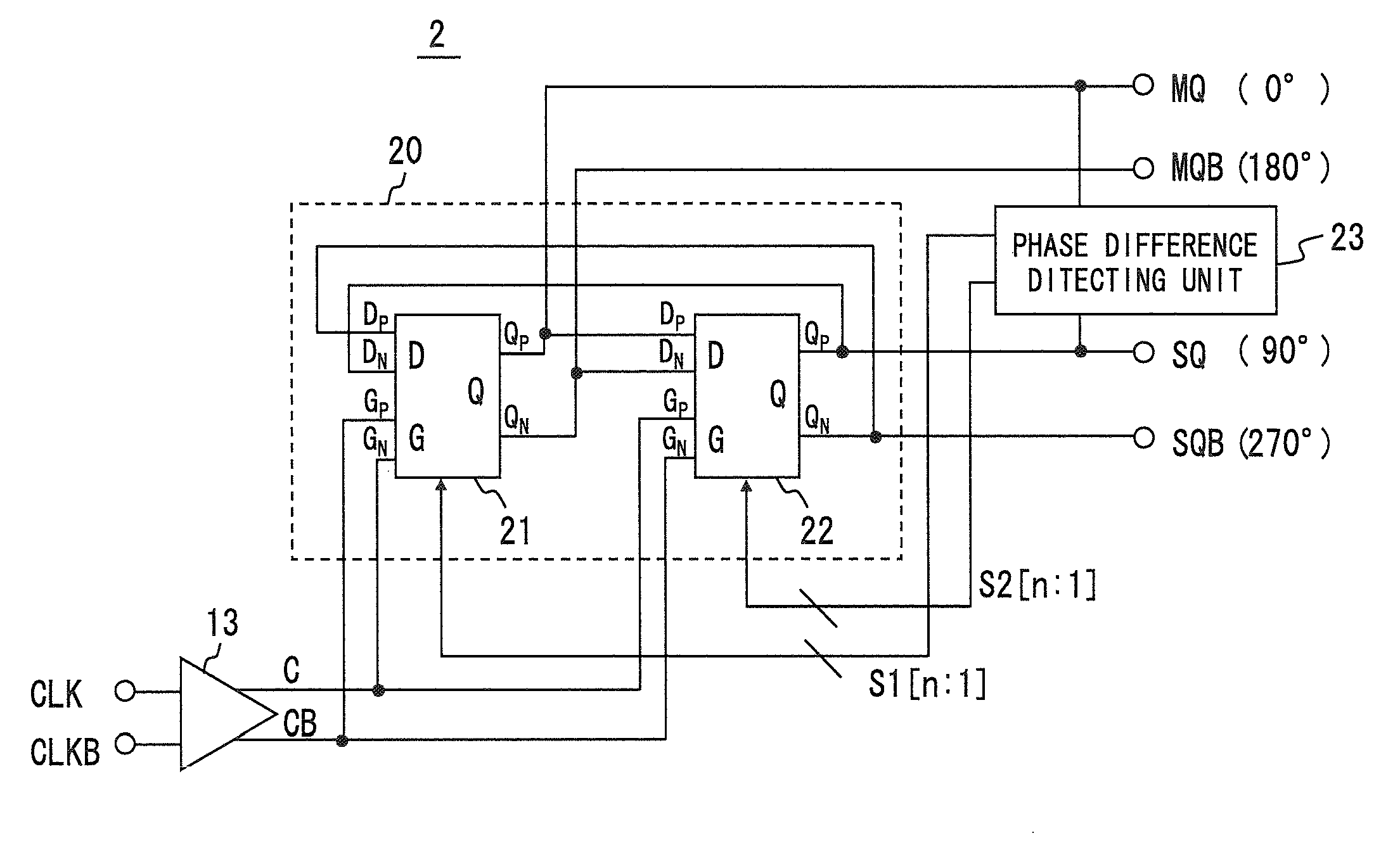Phase shifter
- Summary
- Abstract
- Description
- Claims
- Application Information
AI Technical Summary
Benefits of technology
Problems solved by technology
Method used
Image
Examples
first embodiment
[0038]FIG. 1 shows the configuration of a phase shifter 1 of this embodiment. In FIG. 1, the dividing circuit 10 is a master-slave type T-flipflop where a master D latch 11 and a slave D latch 12 are connected in series. The basic configuration of the dividing circuit 10 is the same as that of the dividing circuit 70 of the phase shifter 70 of the related art. To be specific, an inverting Q output (QN) of the slave D latch 12 is feedback-connected to a D input (DP) of the master D latch 11. Further, a clock signal C obtained by filtering the input clock signal CLK through a high-pass filter (HPF) 13 as described hereinafter is input to a the G input (GP) of the slave D latch 12. On the other hand, an inverted clock signal CB obtained by filtering an inverting signal CLKB corresponding to the clock signal CLK through the HPF 13 is input to a the G input (GP) of the master D latch 11.
[0039]The master D latch 11 and the slave D latch 12 can be realized with various circuit configuratio...
second embodiment
[0070]FIG. 9 shows the configuration of a phase shifter 2 of this embodiment. In FIG. 9, the dividing circuit 20 is a T-flip-flop type dividing circuit composed of a master D latches 21 and slave D latch 22 connected in tandem. The basic configuration of the dividing circuit 20 is the same as that of the dividing circuit 10 of the first embodiment. However, the master D latch 21 and slave D latch 22 include a variable capacitor with a variable capacitance function at output terminals.
[0071]A phase difference detecting circuit 23 detects a shift of a phase difference between the 0-degree signal output to the terminal MQ and the 90-degree signal output to the terminal SQ from 90 degrees. Further, the phase difference detecting circuit 23 outputs control signals S1 and S2 for changing a capacitance of the variable capacitor of the master D latch 21 and slave D latch 22 in accordance with the detected shift of the phase difference. Incidentally, in this embodiment, the control signals S...
PUM
 Login to View More
Login to View More Abstract
Description
Claims
Application Information
 Login to View More
Login to View More - R&D
- Intellectual Property
- Life Sciences
- Materials
- Tech Scout
- Unparalleled Data Quality
- Higher Quality Content
- 60% Fewer Hallucinations
Browse by: Latest US Patents, China's latest patents, Technical Efficacy Thesaurus, Application Domain, Technology Topic, Popular Technical Reports.
© 2025 PatSnap. All rights reserved.Legal|Privacy policy|Modern Slavery Act Transparency Statement|Sitemap|About US| Contact US: help@patsnap.com



